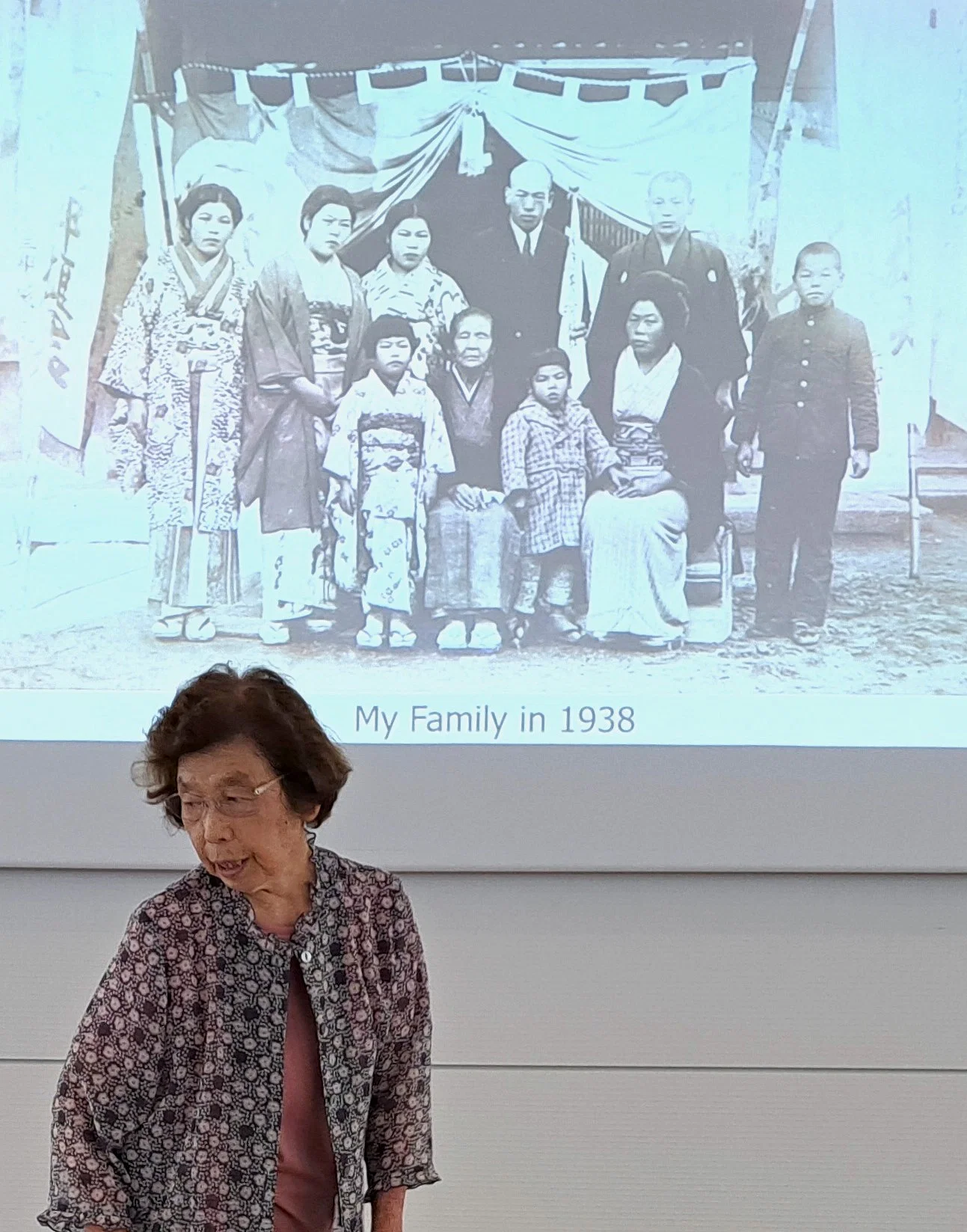
When the atomic bomb detonated over Hiroshima, Japan, on August 6, 1945, 78 years ago, a girl called Sadaye Kasaoka was living in her house approximately three and a half kilometers distant from the core of the explosion.
Although Sadaye stayed at home that day, several of his classmates had to travel to locations around the city center to fulfill various obligations. Outside of European territory, the war had not yet ended. From nearly the start of that year, US military planes continued to strike Japan mercilessly.
The number of casualties from the fire spread from such indiscriminate attacks by the US forces was higher than the number of people who lost their lives directly from the bombs. As a result, to stop the rapid spread of the fire, it was necessary to demolish some structures in denselly populated areas and leavee open spaces.
The city authorities took the help of ordinary citizens in this work by demolishing selected structures in densely populated areas to create open spaces. The group consisted of men and women of various ages, as well as students from schools, closed for summer vacation. That work was in full swing in downtown Hiroshima.
Students going to work from different schools in the city had to take turns to perform duties. August 6 was a day off for Sadayy as he had worked till evening the previous day and that is why he was staying at home that day. Sadayye was at home that morning with her grandmother.
That is why the girl Sadaye was saved from certain death that day. But because of what he had to see and go through in the immediate aftermath, in the days that followed he felt that death would be an easier way out of this life of pain than living. None of Saday’s classmates who had gone to the city center that morning to perform their duties returned alive.
Because Saday is alive, the next generation has a rare opportunity to hear the eyewitness account from his mouth. Sadaye is also narrating the story of that horrible memory with a different dream. His hope is that the future world will become such a world that no human being in the world will have to go through such a terrible experience as he suffered the misfortune of that day.
Sadaye Kasaoka is now 90 years old. He is supposed to spend leisure time at this age. But he did not stop. Because the vow he has taken does not allow him to retire. Sadaye is representative of Japan’s dying generation, the hibakusha, or victims of the atomic bombings. Sadayera is now a regular speaker who narrated his tragic experience in various events. In addition to telling stories, they are bringing forward their painful past through media interviews as a relentless effort to help people understand the horrors of war as well as the cruelty of atomic bombs. According to Saday, time is running out. There is no chance of retirement in front of him.
A few foreign journalists stationed in Tokyo were invited to visit Hiroshima to hear him speak as one of the still-active hibakushas and to question him about that past event to better understand the horrors of the atomic bombings.
It was there that I had the opportunity to meet Sadaye Kasaoka and listen to his speech at the end of last July. Sadaye addressed the special event with the help of a PowerPoint presentation. Then we had a chance to ask him some questions. Let us hear his statement from his own mouth at the beginning.
About Sadaye Kasaoka
I was 12 years old. First-class student in high school. During the summer vacation, we had to demolish some buildings in downtown Hiroshima. Our house was about three and a half kilometers from the epicenter of the bomb blast. Air raid warning sirens had been sounding since that morning, but they stopped after 7:30 am. So I thought the danger might be over for the time being.
That day I was alone at home with my grandmother. It was my day off because I had to work till late the previous day. As a result, when the siren stops, I finish washing clothes. Then, while hanging the clothes to dry in the sun in the yard, I saw a distant orange light and immediately after that, the glass of the window broke and spread around. After running inside the house, I fell on the floor and could feel the blood on my forehead. Even though he was unconscious at that moment, he regained consciousness after a while.
The fire has not yet spread.
I was worried about my parents and siblings. I took my grandmother to a nearby shelter as people around her were talking about going to a shelter to avoid the bombings. Elder brother Kichitaro Osaka was in school at the time. He returned in the evening after receiving this news of the attack. We then learned in person that the father had been injured but had taken refuge at a relative’s house in Hiroshima. Kichitaro goes there to fetch his father. But till then we could not get any news about the mother.